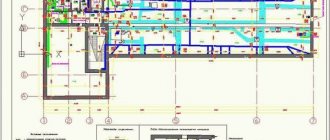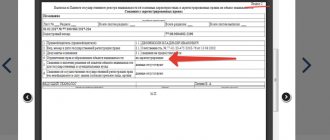What is considered a permanent house on a plot of land?
In the definition of a capital construction project, there is now an indication of temporary buildings (kiosks, sheds and other similar structures) and has been replaced by non-permanent buildings and structures.
It has been established that non-permanent buildings and structures are understood as buildings that do not have a strong connection with the ground and whose design characteristics allow for their movement and (or) dismantling and subsequent assembly without disproportionate damage to the purpose and without changing the basic characteristics of the buildings (including kiosks, sheds and other similar buildings and structures). Legislators and city administration refer to the Housing Code of the Russian Federation, as well as to the requirements for residential premises, which were approved by the Government of the Russian Federation on January 28, 2006. Officials believe that no other regulations are needed at the municipal and regional levels.
If we summarize everything that is said in the Town Planning Code (SNiP, 221 Federal Law “On the Real Estate Cadastre”, Land Code of the Russian Federation) about capital and non-capital construction, then we conclude that “Capital” is a building whose foundation is firmly connected to the ground, deepened and made of durable building materials (brick, stone, concrete, slab, etc.).
Minimum requirements for a built house
We turn to SNiP 02/31/2001:
| Number of houses on the site | no more than 1 |
| Setback from other houses | ≥ 5 meters |
| Setback from the site boundary (fence) | ≥ 3 meters |
| Number of floors of the house | no more than 3 floors |
| Minimum composition of premises | Living room(s), kitchen (kitchen niche) or kitchen-dining room, bathroom or shower room, toilet, pantry or built-in wardrobes, heat generator room (in the absence of centralized heating). |
| Height from floor to ceiling | Living rooms and kitchens ≥ 2.7 m (for the attic ≥ 2.3 m); other rooms ≥ 2.5 m; corridors and when installing mezzanines ≥ 2.1 m. |
| Minimum room sizes | Common living room - 12 m; bedrooms - 8 m (if placed in the attic - 7 m); kitchens - 6 m. The width of the premises must be no less than: kitchen and kitchen area in the kitchen-dining room - 1.7 m; front - 1.4 m, interior corridors - 0.85 m; bathroom - 1.5 m; toilet - 0.8 m. The depth of the toilet must be at least 1.2 m when the door opens outward and at least 1.5 m when the door opens inward. |
If the house you want to build exceeds the above conditions, then before starting construction you will have to approve a project completed by a licensed design organization with local authorities (Legislative regulation - clauses 3,4,5 of the Civil Code of the Russian Federation).
At the same time, the admissions committee may find fault with the following:
- The house was built in just a month. Officials say it's too fast;
- Experts see the catch in the absence of a path to the door and the boards and scaffolding located next to the house;
- You may not like the fact that the corners of the timber are not cut, you can only get to the second floor via a ladder, and there is no partition between the kitchen and living room;
- There are no conditions in the house for rest, sleep, hygiene procedures, cooking and eating, as well as for other activities usually carried out in the home.
Attention! At the end of 2020, based on the results of an audit to strengthen municipal control, the regional Ministry of Economic Development recommended that heads of administrations supplement administrative regulations with mandatory video recording of constructed buildings on land plots.
What documents are needed to put a house into operation?
The list of documents is strictly limited and cannot be expanded at the request of the party accepting the documents for consideration. The following documents are attached to the application for a permit to put the facility into operation (Part 3 of Article 55 of the Civil Code of the Russian Federation):
- Extract from the Unified State Register of Land Registers for the land plot;
- Urban planning plan of the land plot;
- Permission to build a house;
- A diagram showing the location of the constructed house, the location of engineering support networks within the boundaries of the land plot and the planning organization of the land plot signed by the person carrying out the construction (the person carrying out the construction and the developer or customer in the case of construction, reconstruction, major repairs on the basis of an agreement) ;
- Conclusion of the state construction supervision body (SCA);
- A copy of the results of engineering surveys and a copy of sections of the design documentation provided for by the Town Planning Code of the Russian Federation (clauses 2, 8 - 10 of part 12 of article 48, part 18 of article 5);
- Acceptance certificate for a capital construction project (in case of construction under a contract);
- A document confirming the compliance of the built house with the requirements of technical regulations and signed by the person carrying out the construction (the form is not established);
- Documents confirming the compliance of the constructed capital construction facility with technical conditions and signed by representatives of organizations operating engineering support networks (if any).
However, according to the Federal Law “On the implementation of the Town Planning Code of the Russian Federation” dated December 29, 2004 N 191-FZ (latest edition) clause 4 of Art. 8 - until March 1, 2020, it is not required to obtain a permit to put an individual housing construction project into operation, as well as to submit this permit to carry out technical accounting (inventory) of such a facility, including for the registration and issuance of a technical passport of such a facility.
That is, in order to put the house into operation before 03/01/2020, it is enough to submit only two documents to the MFC “My Documents”:
- Technical passport for the built house (order from BTI);
- Extract from the Unified State Register of Land Registers for the land plot.
Please note that Rosreestr sends extracts from the Unified State Register within 3 days (there may be delays). If you want to get information faster, I recommend ordering statements directly through the Rosreestr API - this way you will receive the document within a day. The cost is the same - 250 rubles, the official data is from the Unified State Register of Rosreestr and is confirmed by the registrar’s electronic digital signature (EDS).
Extract from the Unified State Register of Real Estate, which I recently ordered through the Rosreestr API
Commissioning
The procedure for commissioning a permanent structure (or house) is regulated by the Town Planning Code of the Russian Federation (hereinafter referred to as the Civil Code of the Russian Federation).
Its article 55 states that a permit of this kind is issued by the same authorized body that issued a construction permit to the person. Accordingly, all characteristics of the house being built on the site must strictly comply with the requirements of the specified Civil Code of the Russian Federation.
Until March 1, 2020, there is no need to obtain a construction permit, as well as to put an individual housing construction project into operation.
Let's look at step-by-step instructions explaining how to put a house into operation starting in 2020.
The procedure for putting a capital construction project into operation
The process of commissioning a capital construction project is regulated by Federal Law No. 122. This is a basic law that defines a list of grounds (documents) for recognizing the fact of the transition of a house from the state of an object under construction to the state of a finished object. According to Art. 55 of the Town Planning Code of the Russian Federation, permission to put a facility into operation is issued by the same body that issued the construction permit.
The parameters of a house built on a dacha (garden) plot before 01/01/2019 must comply with clause 39 of Art. 1 Civil Code of the Russian Federation. An individual housing construction project may exceed the parameters if a construction permit was received before 08/04/2018, and the parameters comply with the requirements of the permit (Federal Law dated 08/03/2018 N 340-FZ).
I repeat once again that in order to register ownership of a house before 03/01/2020, it is not necessary to obtain and submit permission to put an individual housing construction project into operation (Federal Law dated 12/29/2004 N 191-FZ (as amended on 02/28/2018)), since The dacha amnesty is valid for the specified period.
To put an individual residential building into operation after 2020, you will have to:
Step 1 - sign the house acceptance certificate with the builders
In accordance with the Civil Code of the Russian Federation (clause 4 of Article 753), under a construction contract, the delivery of the object and its acceptance by the customer are formalized by an acceptance certificate signed by both parties. Resolutions of the State Statistics Committee of Russia (No. 71a dated October 30, 1997, No. 100 dated November 11, 1999) approved the forms of the acceptance certificate - KS-2 and KS-11:
- Form KS-2 is used for the acceptance of any specific volume of construction work within the construction project, as well as for the acceptance of the stage of work provided for in the construction contract;
- Form KS-11 is used for acceptance of the construction project as a whole.
Step 2 - obtain an opinion from the state construction supervision
When the acceptance certificate is signed, we contact the authority that issued the construction permit with an application to issue a permit to put the facility into operation (Parts 3.4, Article 54 of the Civil Code of the Russian Federation). In relation to hazardous production facilities, communication lines, especially dangerous, technically complex and unique facilities, the conclusion is issued by the federal executive body in accordance with Decree of the Government of the Russian Federation of February 1, 2006 No. 54. The application review period is 10 days, after which a permit to put the facility into operation will be issued and issued, or a reasoned refusal will be given.
Within 10 days, a visiting commission will arrive at your site, and based on the results of its inspection, a decision is made to issue a conclusion on compliance or to refuse to issue such a conclusion (clause 16 of the Regulations on the implementation of state construction supervision in the Russian Federation). A statement of conformity (CCA) of the state construction supervision body is issued only if during construction there were no violations of the work’s compliance with the requirements of regulatory technical documentation and the project, or such violations were eliminated before the date of issue of the statement of compliance.
At the end, you will find another final inspection, which is carried out by the state construction supervision authority after completion of construction. Depending on the complexity of the object, up to one month is allotted for the final inspection.
Step 3 - obtain permission to put the facility into operation
It is a document that certifies the completion of construction in full and in accordance with the construction permit, the compliance of the constructed, reconstructed or repaired capital construction project with the urban planning plan of the land plot and design documentation (Part 1 of Article 55 of the Civil Code of the Russian Federation). Issued on the basis of an application from the developer to the body that issued the construction permit (federal executive body, executive body of a constituent entity of the Russian Federation or local government body), with a corresponding application (Part 2 of Article 55 of the Civil Code of the Russian Federation).
Within ten days from the date of receipt of the application for a permit to put the facility into operation, the authorized body makes a decision to issue the applicant a permit to put the facility into operation or to refuse to issue such a permit, indicating the reasons for the refusal. Decisions are made based on checking the availability and correctness of documents attached to the application (list below).
The form of permission to put a facility into operation was approved by Decree of the Government of the Russian Federation of November 24, 2005 No. 698:

We can say that the house has been accepted because all other actions are based on this permission
It should be noted that state construction supervision is carried out from the date of receipt of a construction permit (Part 5 of Article 52 of the Civil Code of the Russian Federation) until the date of issuance of a conclusion on the compliance of the constructed, reconstructed or repaired facility with the requirements of technical standards and regulations. Therefore, a positive conclusion is issued only if construction supervision was carried out regularly and throughout the entire construction period. And if, due to the fault of the developer, such supervision was not carried out, then the supervisory authority has the right to refuse to issue an AIA.
How to find out if a house is put into operation
This question is usually of interest to those who have bought or are planning to buy an apartment in a new building.
There are several options:
Option one. Contact the developer himself.
Option two. You can contact the authority that issued the building permit.
You can call there by phone and ask the appropriate question.
Option three. Information about construction permits and commissioning is open data. They are published on the official website of the Department of Architecture and Urban Planning of the corresponding region, where you can find out information about any officially constructed apartment building
Option four. Order an extract from Rosreestr. If ownership of the object has been registered, then permission to put it into operation has definitely been obtained
If the administration does not give an exact answer to a verbal question, you must contact them in writing. Within thirty days a clear response or reason must be provided as to why the information is not being disclosed.
How to put a house into operation without a building permit
If certain parts of the house were built without permission, or the developer did not promptly notify the state construction supervision authority about the start of construction, the commissioning of the house will have to be carried out by an independent specialized organization licensed to conduct a detailed inspection of the building structures of the building or structure. Roughly speaking, we need to legalize self-construction .
The results of the inspection, in the form of a report on the technical condition of the facility, are provided to the state construction supervision body. The supervisory authority (if the results of the survey are positive) may consider issuing an AIA. However, no regulatory document obliges the supervisory authority to issue a positive AIA in the event that supervision over the construction of the facility or part of it was not carried out.
However, since March 1, 2020, Federal Law No. 20 has been in force in Russia, which defines a simplified procedure for putting individual residential buildings into operation before 2020 under the so-called dacha amnesty. Now, in order to register a residential building, it is enough to submit only 2 documents to Rosreestr:
- Technical passport for the built one;
- Extract from the Unified State Register of Land Registers for the land plot.
A simplified procedure allows you to formalize the commissioning of both newly built housing and long-existing self-construction. The word “samostroy” is, of course, slang, but the owner of buildings with such status bears real legal responsibility. The legal meaning comes down to simple logic: since the object has not passed government inspection, no one can guarantee its safety and the likelihood of violating the rights of other citizens.
Legalization of private self-construction is a complex process, but almost always feasible. The situation with apartment buildings and commercial properties is different - it is more difficult to legitimize such unauthorized construction.
The legalization of unauthorized construction takes place either judicially or administratively:
- In court it is necessary to prove that the constructed building complies with SNiP standards, and also does not threaten the life and health of citizens and does not violate the rights of third parties.
- Self-construction on dacha and garden plots will be administratively legalized.
The owner of a self-building cannot sell, transfer, or bequeath his property. Moreover, at any moment such housing can be demolished, and the land plot under the building can be legally seized.
How easy is it to get permission to put a residential building into operation?
In the Russian Federation, legislative norms often change; it is almost impossible for the owner to keep track of all the updates. In each case, you need to collect an individual package of documents and comply with all the requirements of technical regulations.
The Land Lawyer company offers services for obtaining a certificate of commissioning of a residential building. Our specialists will quickly collect documents and submit an application. Solving problems related to the nuances of land and housing legislation is our daily work, which we carry out efficiently.
What are the consequences of self-construction?
From July 1, 2020, the Government of the Russian Federation has set deadlines for the liquidation of illegal buildings. Owners of unauthorized construction who fail to complete demolition on time are subject to a fine of up to 50 thousand rubles, as well as confiscation of the land plot. It is also proposed to make changes to the Civil Code of the Russian Federation that affect the interests of many citizens. According to these changes, it is proposed to include not only residential buildings, but also garages, bathhouses, garden buildings, stalls and pavilions as illegal buildings.
The package of new bills prohibits the use and disposal of illegal buildings, and unauthorized buildings will need to be demolished or reconstructed at one’s own expense. If the developer cannot be identified, then the costs of demolition or reconstruction are borne by the owner of the land plot.
Thus, an article may appear in the Civil Code allowing the confiscation of a land plot in the event of failure to comply with the decision to demolish or reconstruct a building within the prescribed period.
The deadlines for the demolition of unauthorized buildings are also established by law: the maximum period is 12 months, the minimum is 3 months, and for reconstruction - from 6 months to 3 years. Fines The Cabinet of Ministers proposes to amend the Administrative Code by adding an article that provides for a fine for individuals and individual entrepreneurs in the amount of 20 thousand to 50 thousand rubles for failure to comply with requirements for the reconstruction or demolition of an unauthorized building.
Decisions on the demolition of unauthorized buildings, according to the new laws, can be made by the court, and in certain cases - by local government bodies. At the same time, to eliminate abuses, it is proposed to prohibit municipalities from making decisions on the demolition of buildings erected without permission before the entry into force of the Town Planning Code of the Russian Federation (May 7, 1998 - ed.).
It is also prohibited to demolish buildings on unregistered land until the Land Code of the Russian Federation comes into force (October 25, 2001 - ed.). In such cases or if the building is registered in the Unified Register of Real Estate, decisions on the demolition of an unauthorized building will be made in court.
Housing category exempt from demolition
The government proposes to prohibit the demolition of residential buildings on land for individual housing construction, dacha and garden plots, since this is, as a rule, the only housing for the owners. In this case, the following three conditions must be met:
- the owner of the house must be the owner of the land;
- the parameters of the house must comply with urban planning requirements;
- and registration of the building must be completed before March 1, 2018. This is the expiration date of the 2006 “dacha amnesty” law, which provides for a simplified procedure for registering ownership of real estate. There are no plans to extend this law yet.
The draft laws provide for compensation from the budget for the market value of an object for demolition if the buyer, when purchasing it, did not know that it was a self-construction, because the building has been legally registered. The right to receive compensation applies only to objects whose demolition or reconstruction was decided after July 1, 2018.
What to do after putting the house into operation
- The next stage of legalization of housing will be obtaining cadastral documents. To do this, you need to contact the BTI. Employees of the organization will conduct an additional inspection of the building and issue two passports - technical and cadastral.
- Register ownership of the constructed facility in Rosreestr (takes about 2 weeks). I talk about how to register a built house as a property here.
- After registering the property with Rosreestr, the owner becomes the official user. This means that he is obliged to make all utility payments in accordance with the official connection to the networks. According to Art. 153 of the Housing Code of the Russian Federation, the obligation to make payments for housing and communal services is assigned to persons who are owners of real estate or its tenants. This means that immediately after putting the residential premises into operation, it is necessary to notify all utility services, record meter readings and make regular payments.
- The appearance of another unit of real estate in the country means the emergence of a new taxation unit.
How to independently register a built house as your own
Commissioning act
Drawing up the act of putting a building into operation is the prerogative of a special commission consisting of specialists in their field. To eliminate problems and complaints from inspection authorities, it is worth considering a few simple rules:
- First, visit the cadastral chamber located at the address of the building. It is worth finding an engineer in this organization and using his services in clarifying the current boundaries of the land plot and confirming the fact of construction of an individual housing construction project. At this point the building should be completely completed. The presence of a porch, roof, doors, ceilings, windows and other attributes is mandatory.
- After this, submit an application to the territorial government body, and attach to it a permit for the construction of the facility and papers confirming the right to build.
- Submit an application for the survey to the town planning department, as well as a technical passport for the object (drawn up and provided by a cadastral engineer).
- Check with the executive authority for a list of organizations that you should contact to approve the collected documentation. As a rule, we are talking about visiting gas, fire, electrical and other services.
- Get approval to put the building into operation, then pay the required fee for surveying the site and submit the papers to the city planning authority.
The commissioning certificate is a document that is issued only if there are signatures of each member of the commission taking part in the inspection. If any of the members has a personal opinion, he draws up his conclusion, where he indicates the existing shortcomings and defects that require correction. Next, the commission determines the time frame within which the identified problems must be eliminated. As soon as the owner fulfills the requirements imposed on him, the individual housing construction object is inspected again.
The signed act of commissioning is submitted for approval to the head of the architectural committee, who signs with his own hand or transfers this authority to his deputy. The decision of the acceptance committee can be made public through a judicial authority. The act itself is an official document, which is drawn up on a special state-issued form. It contains the following information:
- The composition of the commission with a list of specialists taking part in the process of acceptance of an individual housing construction project. All members of the inspection put their signatures on the document, thereby certifying their personal responsibility for the condition of the building ready for commissioning.
- Date the check was performed.
- Location of the structure.
- The nature of the building (commercial, administrative or residential facility).
- Structural elements of the building. This section means that the inspection participants (commission members) are responsible not only for the entire building as a whole, but also for each of its elements separately.
See also: Independent construction and technical expertise
How to maintain and operate a house after construction
When a house is built, the structure passes into a new legal state, and the owner must be guided by the standards for maintaining housing in proper condition. Such standards include departmental document No. 170, approved in 2003 by the State Construction Committee of the Russian Federation entitled “Rules and Standards for the Technical Operation of Housing Stock,” the contents of which I will briefly discuss below.
The rules contain an exhaustive definition of the concept of “housing stock” - all buildings recognized as suitable for permanent or temporary residence, regardless of the form of ownership and territory of location, are called housing stock. An individual residential building undoubtedly falls into this category, therefore its owners bear full responsibility for maintaining the housing in proper condition, that is, in accordance with rules No. 170.
- According to clause 1.8. Rules, technical operation refers to the management of the housing stock and its sanitary maintenance. Since his own house on his own land is a full-fledged part of the housing stock, its owner is obliged to provide current and major repairs, clean up the local area and care for green spaces.
- It is the responsibility of the homeowner to maintain and ensure the safety of technical documentation for long-term and temporary storage. The Rules provide a list of all mandatory documentation. Having put the house into operation, its owner must ensure the full functioning of the housing under the control of the State Housing Inspectorate of the Russian Federation (clause 1.10).
- The rules prohibit any changes to the house that may result in a violation of the strength of supporting structures or significantly worsen the condition of communications and fire-fighting equipment. The owner of the house is responsible for such actions. In the best case, he will have to eliminate dangerous innovations; in the worst case, if someone was injured as a result of the accident, the liability may be more serious, even criminal.
- In order to avoid fines and regulations, all redevelopment must be coordinated with the competent authorities. Thus, Gosstroy rules No. 170 are a set of norms regulating the activities of all owners and users of housing facilities.
In other words, you will have to maintain housing through periodic repairs, refurbishment, redevelopment and technical maintenance. These types of ensuring the viability of buildings are divided into two parts - those requiring approvals and permits from regulatory authorities and those not requiring such actions.











